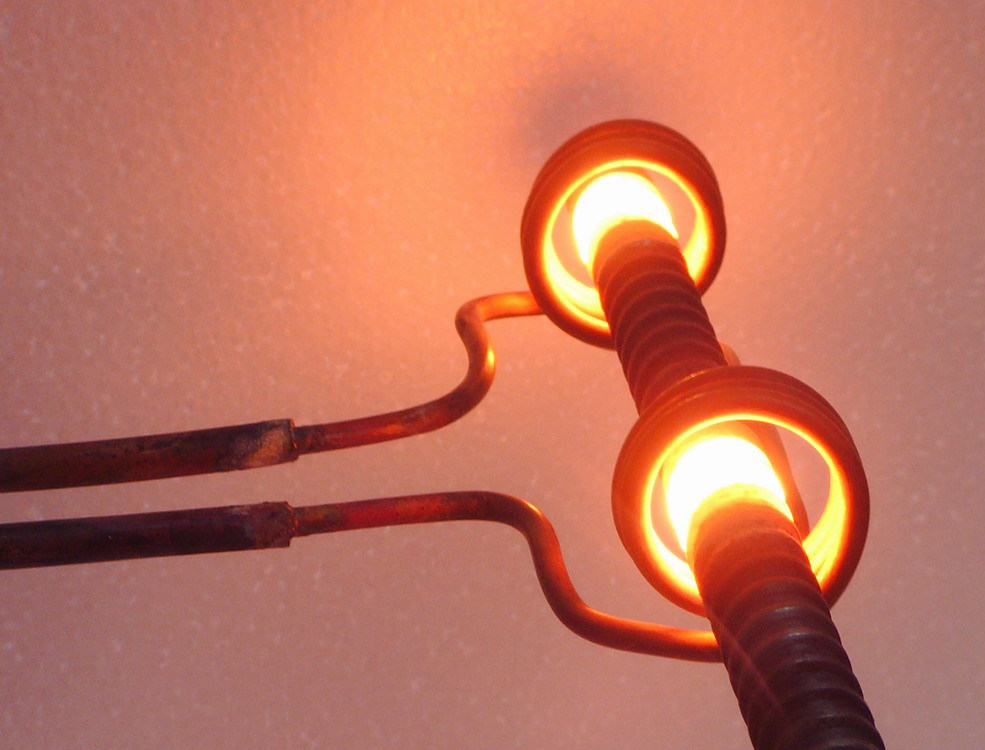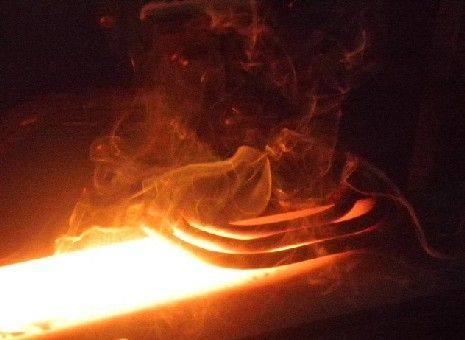
Metal heat treatment
Generally speaking, industrial components have requirements for the strength and various properties of the parts. Especially in the aerospace and military industries, there are very strict requirements for the performance of components. So the heat treatment after metal printing is an essential step.
But there are still some essential preparations before heat treatment. When the parts are printed, they will be covered with a large amount of powder. Before taking out the parts and placing them in the heat treatment furnace, try to clean the powder adhering to the parts as much as possible. Firstly, it saves material costs. Secondly, if there is an internal flow channel structure in the part and the flow channel is too narrow, not cleaning the powder may cause flow channel blockage.
Heat treatment is the process of heating, insulating, and cooling solid metals or alloys in an appropriate manner to obtain the desired microstructure. So the process of heat treatment is carried out in three stages: heating, insulation, and cooling. Regardless of the type of heat treatment, it is divided into three stages, with differences in heating temperature, holding time, and cooling rate.
The characteristic of heat treatment process is that it does not change the external dimensions of metal parts, but only changes the internal structure of the material and the performance of the parts.
Common heat treatments include annealing, normalizing, quenching, and tempering. The following will elaborate on steel as an example:
The purpose of heat treatment of steel is to eliminate certain defects in the material's microstructure, and more importantly, to improve and enhance the performance of steel, fully tapping into its potential. This is of great significance for improving product quality and extending service life.

1、 Annealing
Annealing is a heat treatment process in which a metal or alloy workpiece is heated to an appropriate temperature (above or below the critical temperature, which is the temperature at which the material undergoes structural transformation), held for a certain period of time, and then slowly cooled (i.e. cooled in the furnace or buried in a medium with poor thermal conductivity). The characteristics of annealing process are long holding time, slow cooling, and the ability to obtain a balanced microstructure.
The main purpose of steel annealing is to refine the structure, improve performance, reduce hardness, and facilitate cutting processing; Eliminate internal stress; Improve toughness and stabilize dimensions. Make the structure and composition of steel uniform; It can also be used to prepare the organization for future heat treatment processes. Depending on the purpose of annealing, there are several types of annealing, such as complete annealing, spheroidization annealing, and stress relief annealing.
Annealing is often performed on castings, forgings, and welded parts during the manufacturing process to facilitate future cutting or preparation for quenching.
2、 Normalization
The heat treatment process of heating steel parts to 30-50 ℃ above the critical temperature, holding them for an appropriate period of time, and cooling them in still air is called normalizing. The main purpose of normalizing is to refine the structure, improve the properties of steel, and obtain a structure close to equilibrium.
The main difference between normalizing and annealing processes is that the cooling rate of normalizing is slightly faster, so the production cycle of normalizing heat treatment is shorter. When annealing and normalizing can meet the performance requirements of the parts, it is recommended to use normalizing as much as possible. Most medium and low carbon steel billets are generally subjected to normalizing heat treatment. Annealing is commonly used for general alloy steel billets. If normalizing is used, due to the fast cooling rate, the hardness after normalizing is higher, which is not conducive to cutting processing.

3、 Quenching
The heat treatment process of heating steel parts to a certain temperature above the critical point (quenching temperature of 45 steel is 840-860 ℃, quenching temperature of carbon tool steel is 760-780 ℃), holding for a certain period of time, and then cooling at an appropriate speed to obtain martensitic or bainitic structure is called quenching.
The main difference between quenching, annealing, and normalizing treatment in terms of process is the fast cooling rate, aimed at obtaining martensitic structure. That is to say, in order to obtain martensitic structure, the cooling rate of steel must be greater than its critical speed. The critical velocity refers to the minimum cooling rate required to obtain martensitic structure. The critical cooling rate varies depending on the type of steel, with carbon steel generally having a higher critical cooling rate than alloy steel. So carbon steel needs to be cooled in water after heating, while alloy steel needs to be cooled in oil. If the cooling rate is lower than the critical cooling rate, martensitic structure cannot be obtained. However, if the cooling rate is too fast, the internal stress in the steel will increase, causing deformation and even cracking of the steel component.
4、 Tempering
The heat treatment process of quenching steel parts, heating them to a temperature below the critical temperature, holding them for a certain period of time, and then cooling them to room temperature is called tempering.
Steel parts that have been quenched generally cannot be used directly and must be tempered before use. Due to the high hardness and brittleness of quenched steel, direct use often leads to brittle fracture. Tempering can eliminate or reduce internal stress, reduce brittleness, and improve toughness; On the other hand, the mechanical properties of quenched steel can be adjusted to achieve the service performance of the steel. According to the different tempering temperatures, tempering can be divided into three types: low-temperature tempering, medium temperature tempering, and high-temperature tempering.
(1) Low temperature tempering
The tempering of quenched steel parts below 250 ℃ is called low-temperature tempering. Low temperature tempering is mainly used to eliminate internal stress and reduce the brittleness of steel.
(2) Medium temperature tempering
The tempering of quenched steel parts between 250 ℃ and 500 ℃ is called medium temperature tempering, which can achieve good elasticity.
(3) High temperature tempering
Tempering of quenched steel parts above 500 ℃ is called high-temperature tempering. After high-temperature quenching, quenched steel parts have good comprehensive mechanical properties. Quenching and high-temperature tempering are called quenching and tempering treatment.